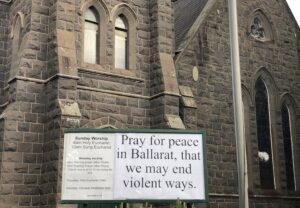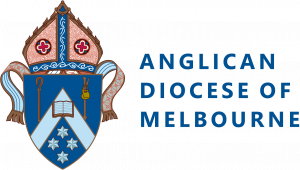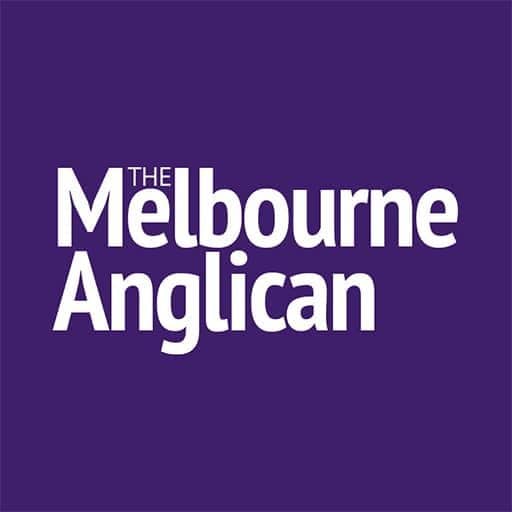
Peter Adam
15 July 2023
Last year we celebrated the 175th anniversary of the foundation of both the Anglican and the Roman Catholic dioceses of Melbourne. We often heard recounted the story of the rudeness of Bishop Perry, first Bishop of Melbourne, to Dr Geoghegan, the local Roman Catholic priest.
On his arrival in 1848, Bishop Perry declined to meet with Geoghegan. Perry was not at home when he called, so did not “shut the door in his face”, as diarist Georgiana McCrae recorded. Perry wrote to Geoghegan, saying that because of their doctrinal differences, any meeting “could only be an occasion of pain rather than pleasure”.
Not a happy story! But is it fair to judge a person without knowing their historical context? Do we not need more than one story? These are issues relevant to understanding other people in general, and especially those in another cultural or historical context.
Read more: Melbourne Anglicans and Catholics mark 175 years of shared history | Pictures
This is an attempt to put that rudeness in its historical context, to better understand it.
In 1843, Bishop Broughton, the Sydney-based, high church Tractarian Bishop of Australia officially and publicly asserted that the Pope had no right to appoint Bishops or create dioceses in Australia. In April the Pope had appointed John Bede Polding as Roman Archbishop of Sydney.
Broughton made his public protest in St James’s Church, Sydney, on 25 March, 1843, which included these words:
“The Bishop of Borne [Rome] has not any right or authority, according to the laws of God and the canonical order of the Church, to institute any episcopal or archiepiscopal see or sees within the diocese of Australia and the province of Canterbury aforesaid; and we do hereby publicly, explicitly, and deliberately protest against, dissent from, and contradict any and every act of episcopal or metropolitan authority [that results from such actions]”
It was the first time since the Reformation that the Pope had established a diocese with the title of a city within the realm of England. This meant that there were now two bishops with the same title and diocese. In the words of his biographer Whitington, Broughton therefore claimed that any actions of Roman Catholic bishops were invalid, especially ordinations, “as they were solemnized by a bishop in a state of schism they were, according to every ecclesiastical principle, utterly null and void”.
Read more: Multi-denominational group seeks to build greater collaboration, rapport within Clayton
Broughton was defending the Catholic integrity of the Church of England in Australia. (He was also attempting to continue Anglican ascendency over other denominations in matters of state aid for clergy, and for church buildings, and in education).
He instructed all clergy in Australia to read his declaration to their congregations. John Wollaston did so in Western Australia, and no doubt it was also read in Melbourne churches.
Broughton also publicly preached against Roman Catholic doctrines in Melbourne in 1843. We learn from Georgiana McCrae that in St James’ Cathedral Melbourne, the Bishop preached against praying to the saints, and the transubstantiation of the bread and wine in Holy Communion.
He had previously warned:
In these times of rampant Papistry it becomes the duty of every sincere Protestant to be up and doing before the days come and the years draw nigh when the myridons [sic] of the Vatican will ride rough-shod over the length and breadth of the land, as in the days of bloody Queen Mary.
It is in this context that we should understand the actions of the low-church Evangelical Bishop Perry, who arrived in Melbourne in 1848. Anti Roman Catholic sentiment was strong in England, and he would have known of Broughton’s statement in 1843, which Broughton did not retract.
Read more: Christians not called to be unanimous, but to be united: Welby
Perry did decline to meet with Geoghegan. However, here is another story.
Perry later publicly supported the staunchly Roman Catholic leader Caroline Chisholm, who provided safety in travel and employment for women who arrived in the colony. He chaired her committee, founded in 1852 and so publicly associated with Geoghegan, also on the committee.
(When Mrs Chisholm approached Broughton for support, he declined any public association with because she was a Roman Catholic, but did give her £5, and allowed his wife to work with her!)
We need to learn to understand people in the context in which they function, and with more evidence than just one story which grabs out attention.
I am full of admiration for Bishop Broughton and Bishop Perry, pioneers of the Anglican Church in Australia. We should understand their actions in their historical context, so different from our own. We might not approve of all their actions, but we can still thank God for them. We should praise God for good progress in ecumenical relationships since 1843! We should also continue to speak the truth, and speak it in love (Ephesians 4:15).
The Reverend Canon Dr Peter Adam, OAM, is vicar emeritus of St Jude’s Carlton, canon emeritus of St Paul’s Cathedral, and former principal of Ridley College. A fuller version of this piece, with references, is available at bit.ly/bishoperry.
For more faith news, follow The Melbourne Anglican on Facebook, Twitter, or subscribe to our weekly emails.






